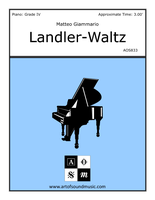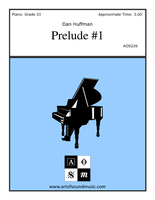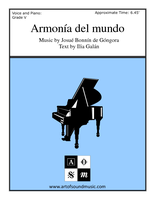Terezin Children’s Songs
| Composer | Harbach, Barbara |
|---|---|
| Duration | 17.5 |
| Ensemble | Soprano, Violin and Piano |
| Genre | Modern Classical |
| Grade | 4 |
| Model Number | AOS994 |
| Category | Mixed Chamber Music, Piano, Piano Trios, Soprano, Violin, Voice and Chamber Ensemble |
For Soprano, Violin and Piano. Vocal range C4-A5.
The ghetto of Terezin (Theresienstadt), located in the hills outside Prague, was an unusual concentration camp in that it was created to cover up the Nazi genocide of the Jews. Billed as the “Führer’s gift to the Jews, this “model ghetto” was the site of a Red Cross inspection visit in 1944. With its high proportion of artists and intellectuals, culture flourished in the ghetto – alongside starvation, disease, and constant dread of transports to the death camps of the east. Every one of its inhabitants was condemned in advance to die.
97,297 died among whom were 15,000 children between the years 1942-1944; less than 100 children survived. In the poems and drawings of the children, many smuggled out of the camp, we see the daily misery of these uprooted children, as well as their courage and optimism, their hopes and fears. These innocent and honest depictions allow us to see through the eyes of the children what life was like in the ghetto. Their art reveals a maturity beyond their years, are haunting reminders of what no child should ever have to see. In spite of the circumstances, the poetry is beautiful and uplifting – telling a story that resonates in each of us.
1. Birdsong –Anonymous Child, Written in Terezin Concentration Camp (1941)
He doesn’t know the world at all
Who stays in his nest and doesn’t go out.
He doesn’t know what birds know best
Nor what I want to sing about,
That the world is full of loveliness.
When dewdrops sparkle in the grass
And earth’s aflood with morning light,
A blackbird sings upon a bush
To greet the dawning after night.
Then I know how fine it is to live.
Hey, try to open up your heart
To beauty; go to the woods someday
And weave a wreath of memory there.
Then if tears obscure your way
You’ll know how wonderful it is
To be alive.
2. Forgotten – Anonymous
You wanton, quiet memory that haunts me all the while
In order to remind me of her whom love I send.
Perhaps when you caress me sweetly, I will smile,
You are my confidante today, my very dearest friend.
You sweet remembrance, tell a fairy tale
About my girl who’s lost and gone, you see.
Tell, tell the one about the golden grail
And call the swallow, bring her back to me.
Fly somewhere back to her and ask her, soft and low,
If she thinks of me sometimes with love,
If she is well and ask her, too, before you go
If I am still her dearest, precious dove.
And hurry back, don’t lose your way,
So I can think of other things,
But you were too lovely, perhaps, to stay.
I loved you once. Good-bye, my love!
3. On A Sunny Evening – Anonymous (1944)
On a purple, sun-shot evening
Under wide-flowering chestnut trees
Upon the threshold full of dust
Yesterday, today, the days are all like these.
Trees flower forth in beauty,
Lively too their very wood all gnarled and old
That I am half afraid to peer
Into their crowns of green and gold.
The sun has made a veil of gold
So lovely that my body aches.
Above, the heavens shriek with blue
Convinced I’ve smiled by some mistake.
The world’s abloom and seems to smile,
I want to fly but where, how high?
If in barbed wire, things can bloom
Why couldn’t l? I will not die!
4. The Butterfly – Pavel Friedman (1942)
The last, the very last,
So richly, brightly, dazzlingly yellow.
Perhaps if the sun’s tears would sing
against a white stone. . . .
Such, such a yellow
Is carried lightly ‘way up high.
It went away I’m sure because it wished to
kiss the world good-bye.
For seven weeks I’ve lived in here,
Penned up inside this ghetto.
But I have found what I love herev. The dandelions call to mev And the white chestnut branches in the court.
Only I never saw another butterfly.
That butterfly was the last one.
Butterflies don’t live in here,
in the ghetto.
5. Do Not Stand at My Grave and Weep – Mary Elizabeth Frye (1932)
Do not stand at my grave and weep
I am not there. I do not sleep.
I am a thousand winds that blow.v I am the diamond glints on the snow.
I am the sunlight on ripened grain.
I am the gentle autumn rain.
When you awaken in the morning’s hush
I am the swift uplifting rush
Of quiet birds in circled flight.
I am the soft stars that shine at night.
Do not stand at my grave and cry;
I am not there. I did not die.
Review from Issue 40:2 (Nov/Dec 2016) of Fanfare Magazine.
http://www.fanfarearchive.com/articles/atop/40_2/4023120.az_HARBACH_Terezin_Children_Songs.html
The opening Terezin Children’s Songs sets texts by the children who were confined to the Nazi “showcase” concentration camp, more often referred to by its German name, Theresienstadt. The “Potemkin Village” had an unusually high percentage of composers, writers, and other artistic prisoners who were allowed a degree of freedom to practice their art—until, of course, these unfortunate Jews were eventually shipped off to the gas chambers in Auschwitz. Among the prisoners of Theresienstadt who eventually lost their lives were some 15,000 children, some of whose art and poetry was smuggled out of the camp. The depictions of the brutal life of the camp as seen through the eyes of a child are moving in the extreme, and the beauty of these settings is striking from the very first notes of the opening song, “Birdsong.” It features a lovely lyrical melody sung by the soprano, with a counter melody by the violin weaving around it in canonic fashion. These lines are accompanied in the piano by some of the most gorgeous harmonies imaginable.
Despite the circumstances attending the writing of this poem by the anonymous child, there is a spirit of optimism in the poem (“You’ll know how wonderful it is to be alive”) that Harbach set exquisitely in the music. The second song, “Forgotten,” foregoes the use of the piano it its first stanza, giving a particularly wistful quality to the setting of this text about love and friendship. “On a Sunny Evening” seems a bit more reserved in its rhythmic structure and harmonies; here, the subject is nature, but it closes with the lines, “If in barbed wire, things can bloom, Why couldn’t I? I will not die!” Unlike those of the first three songs, the authors of the final two are known. These include “The Butterfly” by Pavel Friedman and “Do not stand at my grave and weep” by Mary Elizabeth Frye. The shift in style in the final two or three songs from the lighter and more upbeat opening ones, both in the texts and Harbach’s music, is quite noticeable. Nevertheless, their sadness yields a luminescent beauty that will deeply move the listener. This cycle, beautifully sung by soprano Stella Markou, worthily stands in the company of the great cycles by Samuel Barber and Ned Rorem. They’re really that good, and this is my favorite work on the recital.









